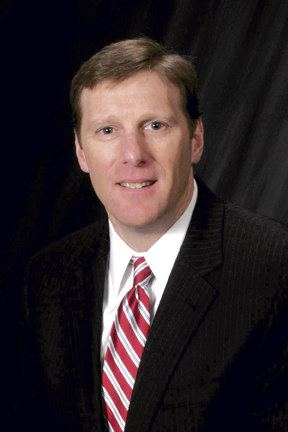Benefits Products & Services
Financial wellness interest grows
MetLife partnership with EY helps strengthen “human connection”
Since the firestorm of the financial crisis a decade ago, employers have been gradually providing employees with more financial management help as part of their benefit plans. Initially, coming out of the recession, this help centered on retirement plans—boosting employee contributions by educating staff members and enrolling them automatically; and adding investment tools, such as target date funds.
This heightened involvement in employees’ retirement planning has set the stage for some employers to offer much broader financial management help to benefit plan participants—falling under the general category of financial wellness. Typical areas of financial wellness assistance could include counseling on debt management, college savings plans and estate planning.
According to the 2018 edition of MetLife’s Employee Benefit Trends Study, only 18% of employers offer financial wellness tools, whereas 57% of employees express an interest in having “a comprehensive financial wellness program.”

—Jeff Tulloch
Vice President, PlanSmart Financial Wellness
MetLife
Another recent independent study, which was commissioned by MassMutual, produced similar results. It found that high percentages of widely divergent demographic groups are interested in receiving more financial counseling from their employers than they are getting. (See the “Benefits Products & Services” column in the June 2018 issue of Rough Notes.)
Financial wellness may be something of a distant cousin to physical wellness in the benefits space—related, but less than immediate family. Employers with physical wellness programs usually hope for an eventual return on their investment in the form of lower health claims and reduced premiums. The financial wellness movement seems to be driven more by employee interest.
Financial wellness programs provide a more subjective way of connecting employees to their employer, one that may produce a return of employee loyalty and productivity that is sometimes harder to measure.
“The awareness of people’s financial challenges has increased,” says Jeff Tulloch, vice president, PlanSmart® Financial Wellness at MetLife. “Employers have certainly woken up to the reality that financial worry is probably the largest source of stress for most people, and how that is a drain on the company’s productivity.”
The program Tulloch heads is part of MetLife’s long-established commitment to financial wellness within employee benefit plans. About 12 years ago the company introduced a program called Retirewise® to its benefits clients, consisting of four seminars on pre-retirement and post-retirement financial topics. Employees could sign up for the seminars, which were conducted by trained MetLife retirement specialists.
Three years later, MetLife used the same format to start PlanSmart, broadening the seminar topics beyond the retirement arena to include managing credit, college funding, long-term care, estate planning, and financial management for dependents with special needs.
“When we started Retirewise, we had no idea what employers were going to think of it, so we set a goal the first year of getting 11 large customers to sign up for it,” says Tulloch. “In the first year we got more than 50. From there it has just accelerated.” Within three years, more than 700 employers were using Retirewise, and after 12 years hundreds of thousands of employees have gone through the seminar series.
“What is especially telling,” Tulloch says, “is that 45% of the employees who have attended the seminars have chosen to take the next step and meet with an advisor. That’s always been a good validation of what we’re doing. So, as we look to the future, we want to build on that personal consultation model.”
MetLife has decided that the way to do that is through a partnership it is launching with Ernst & Young LLP (EY). Under the venture, PlanSmart Financial Wellness, EY will provide MetLife plan participants financial wellness consulting both online and via phone.
“While our current model is working well and is helping to change employee financial behaviors, we wanted to be able to broaden the means of providing financial advice beyond the face-to-face approach,” Tulloch explains. “We’re all individuals with different preferences for receiving information.”
He says MetLife chose to work with EY because it has a “tested model” for providing the online and phone options for financial consultations and “because it has demonstrated evidence of helping people take action to change their financial behavior.”
He describes EY’s digital component of financial wellness as “goal-based. It’s not a financial assessment or financial score model. It’s more personalized. It helps aggregate an employee’s financial situation, bringing in debts and assets so the employee can look at the financial picture in total and then take action. It helps an employee decide ‘What’s most important to me right now? Is it reducing my debt? Is it saving for a home? Is it saving for retirement? Is it understanding my benefits?’
“Once an employee has done this digital advance work, he or she can get on the phone with an EY financial planner, who is able to see what the employee has worked on—assuming he or she provides the planner access to that information. Then the financial planner can speak to a huge variety of topics an employee might be interested in.”
The phone conversations between MetLife benefits customers and EY planners are designed to provide objective financial information. Benefits questions addressed can include those related to both MetLife and non-MetLife products.
The way the digital/phone consultations work depends on individual customer preferences. “Some people might have one specific question they want to ask. Others may want to check in on a regular basis. If they want to continue a relationship with the same EY consultant, they can do that,” Tulloch says.
Face-to-face consultations with MetLife planners will continue to be available as they have in the past under PlanSmart and Retirewise, he adds.
“Our financial wellness platforms are there not just to support MetLife benefits, but any of the employer’s benefits,” Tulloch stresses. “Even if the benefits involved are from one of our competitors, the employee can get support. Our brokers and consultants like that.”
MetLife’s recently published 16th annual Employee Benefit Trends study identifies financial wellness programs as one way for employers to respond to a trend it calls “a craving for a human connection” in the workplace. Sometimes this is expressed as employees wanting their work life to support their personal life. Other ways employers can respond to this trend are with flexible benefits packages and flexible work schedules.
About half (51%) of employers and 46% of employees surveyed fear the loss of humanity at work, the study finds. Among employees who feel most connected at work, more than 90% expect to stay with their company in the next 12 months, and they are more than 17 percentage points more likely to trust their company’s leadership.
In the 12-plus years that MetLife has conducted seminars on retirement and other financial topics, it has seen plenty of examples of plan participants gaining the personal financial insights they need. Tulloch recalls one woman from California who had worked for her employer for about 25 years and was hoping to retire.
“She had no idea what her finances would look like in retirement and was afraid that maybe she could not afford to retire. Following a Retirewise presentation, she met with the advisor, and the advisor mapped out the plan showing her that in fact she could retire. It was good for her to have that comfort level, and good for the employer that could move other people up within the organization.”
Employees have different financial wellness needs and preferences for how they receive financial counseling, Tulloch emphasizes. By paying attention to those needs and preferences, MetLife aims to strengthen the “human connection” that its study says both employers and employees are seeking.
The author
Thomas A. McCoy, CLU, is an Indiana-based insurance freelance writer.





